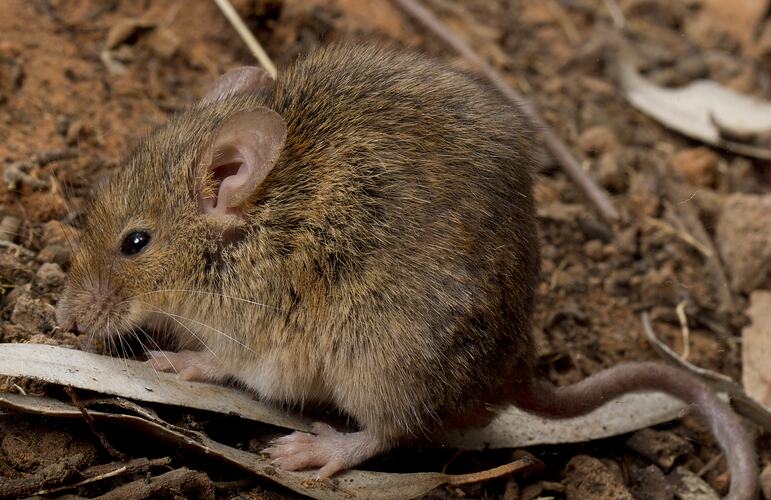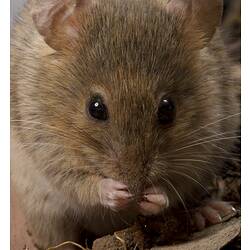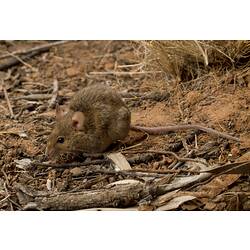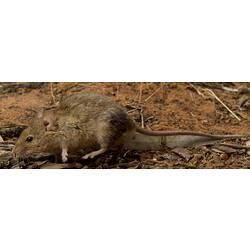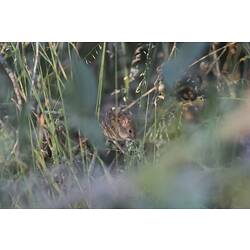General Description
Body fur usually brown, but can be yellow to black above and white, grey or pale yellow underneath. Musky body odour. Body up to 9 cm long.
Biology
House Mice are mostly nocturnal and have a varied diet, including seeds, shoots, insects and many foods that humans eat. Population sizes can vary enormously and irrupt into plague proportions, especially in agricultural areas.
Distribution
Introduced on all continents except Antarctica (native to Eurasia). Widespread in Australia.
Habitat
Wide range of areas, especially associated with human disturbance, including urban places, pasture, and crop fields.
More Information
-
Animal Type
-
Animal SubType
-
Brief Id
Strong body odour, dark fur.
-
Colours
Brown
-
Habitats
Wetland, Urban, DryForest, WetForest, Woodland, Mallee, Grassland
-
Where To Look
-
When Active
Nocturnal
-
Diet
Omnivore
-
Diet Categories
Insects, Seeds, Fungi, Fruit
-
Endemicity
-
Conservation Statuses
CITES: Not listed, FFG Threatened List: Not listed, EPBC Act 1999: Not listed, IUCN Red List: Least Concern
-
Taxon Name
-
Scientific Author
Linnaeus, 1758
-
Common Name
House Mouse
-
Kingdom
-
Phylum
-
Subphylum
-
Class
-
Order
-
Suborder
-
Superfamily
-
Family
-
Subfamily
-
Genus
-
Species Name
musculus
